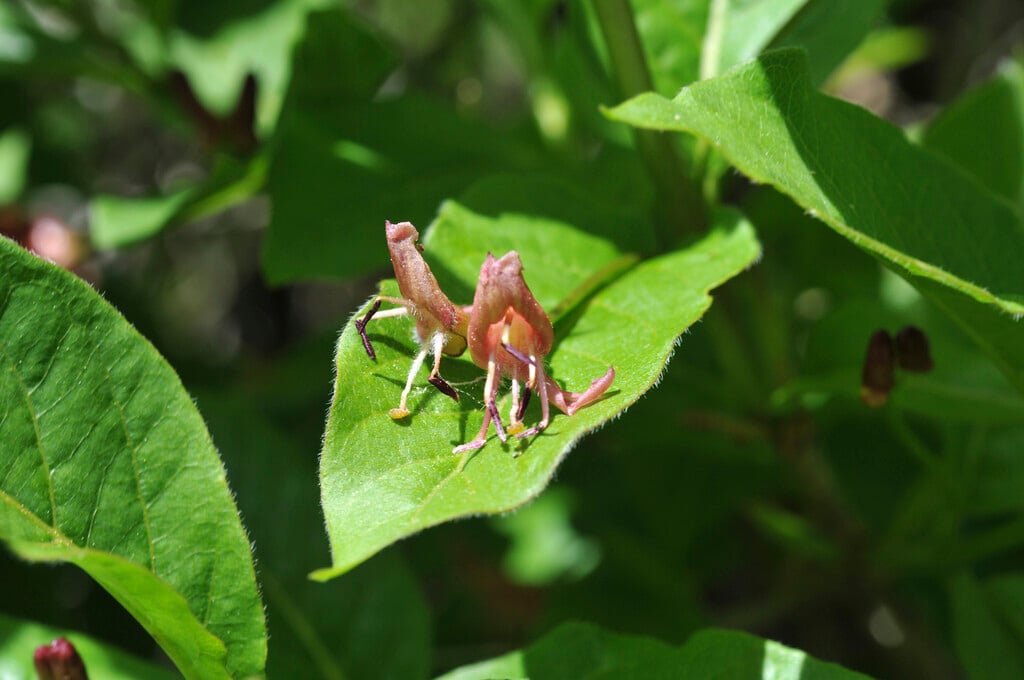Not the plant you're looking for? Search over 300,000 plants
Shrubs
Size
Ultimate height
1–1.5 metresTime to ultimate height
2–5 yearsUltimate spread
1–1.5 metresGrowing conditions
Chalk
Clay
Loam
Sand
Moisture
Moist but well–drainedpH
Acid, Alkaline, NeutralColour & scent
| Stem | Flower | Foliage | Fruit | |
| Spring | Green | |||
|---|---|---|---|---|
| Summer | White Pink | Green | ||
| Autumn | Green | Black | ||
| Winter |
Position
- Full sun
- Partial shade
Aspect
East–facing or South–facing or West–facing
Exposure
Exposed or Sheltered Hardiness
H7Botanical details
- Family
- Caprifoliaceae
- Native to GB / Ireland
- No
- Foliage
- Deciduous
- Habit
- Bushy, Spreading branched
- Potentially harmful
- Fruit are ornamental - not to be eaten. Wear gloves and other protective equipment when handling. Pets: Fruit are ornamental - not to be eaten - see the HTA guide to potentially harmful plants for further information and useful contact numbers
- Genus
Lonicera can be deciduous and evergreen shrubs, or climbers with twining stems. The tubular or two-lipped flowers, often very fragrant, are followed by red or black berries
- Name status
Correct
- Plant range
- C & S Europe
How to grow
Cultivation
Grow in any well-drained soil in full or partial sun. See honeysuckle (shrubby) cultivation for further advice
Propagation
Propagate from hardwood cuttings, softwood cutttings or semi-ripe cutting at each time of year. Or propagate from seed (tree/shrub
Suggested planting locations and garden types
- City and courtyard gardens
- Cottage and informal garden
- Banks and slopes
Pruning
Pests
May be susceptible to aphids
Diseases
May be susceptible to powdery mildews
Get involved
The Royal Horticultural Society is the UK’s leading gardening charity. We aim to enrich everyone’s life through plants, and make the UK a greener and more beautiful place.
